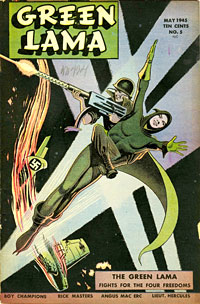 In a prior posting, I covered the connection between pulp publishers and comic book publishers.
In a prior posting, I covered the connection between pulp publishers and comic book publishers.
This time, I’ll delve further into comic book versions of pulp heroes. This post, the first of a two-part series, looks at the comic book versions published during the original hero pulp period (1930s-50s). The second article will look at the various adaptions of pulp heroes into comics in the Silver Age of comics, along with original pulp hero comic book characters that also came out.
The pulp hero period basically ran from 1931 (with the debut of The Shadow) until 1953 with the demise of the pulp heroes and the ending of the last pulp heroes The Black Bat and The Phantom Detective. This more or less corresponds with the Golden Age of comic books, which lasted from the beginning of comic books in the 1930s to the early 1950s.
As noted in my prior posting, several pulp publishers had connections with comic book publishers, and so several characters crossed over.
Street & Smith
Probably the biggest pulp house with a presence in comics was Street & Smith. They had the leading pulp heroes in The Shadow and Doc Savage, and in 1940 also started to publish comics, adapting many of their characters to that media. It’s clear that the pulps were more aimed at adults, whereas their comics were aimed at kids. They continued to published both until shutting down pulps and comics in 1949.
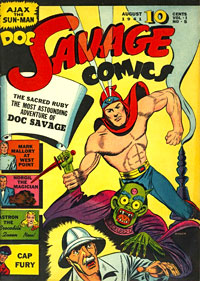 The Shadow and Doc Savage each got their own comic book titles, with The Shadow lasting the longest. The Doc comic ran for only 20 issues. The Shadow comic actually had stories written by Walter Gibson, many adapted from the pulps. Doc Savage, however, after starting off with adaptions of radio shows based on the pulp stories, then went off in a new direction.
The Shadow and Doc Savage each got their own comic book titles, with The Shadow lasting the longest. The Doc comic ran for only 20 issues. The Shadow comic actually had stories written by Walter Gibson, many adapted from the pulps. Doc Savage, however, after starting off with adaptions of radio shows based on the pulp stories, then went off in a new direction.
After crashing in Tibet, Doc was given a mystic ruby in a blue hood that he wore in fighting evil (while bare chested). Accompanied by Monk and Ham, Doc traveled the world to fight evil. At some point, the ruby was dropped, and the trio just became a group of roving troubleshooters.
Other Street & Smith characters who made the jump to comic books included The Avenger, The Skipper, The Whisperer, Norgil, The Wizard, Nick Carter and his adopted son Chick, Carrie Cashin, and Click Rush.
Sadly, other then a few Doc comic reprints, I’ve not seen the comic book version of these various characters.
Thrilling/Nedor
Thrilling was another major publisher of pulp heroes, and several of its characters appeared through its associated comic book publisher, better known as Nedor. But, strangely, several characters did not appear under their original names.
The Phantom Detective did get his own comic book series in one of their titles that lasted many issues. The Green Ghost, as well, probably outlasted his pulp title, but this version was more like the Green Lama then the pulp version.
The Black Bat had a series, but because of the controversy with DC Comics and its Batman, the character appeared as The Mask in stories adapted from the pulps.
Captain Future faced something else. Nedor published a long running series with Captain Future, but this character had nothing to do with the pulp character. The first Captain Future pulp story was adapted, but in it he was renamed Major Mars.
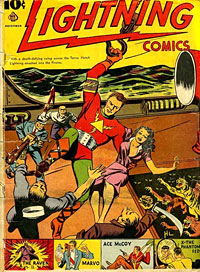 Ace
Ace
Ace pulps (aka Periodical House) had a few of their characters appear in Ace Comics, but all were renamed. No idea why. The long-running Secret Agent X appeared as X — The Phantom Fed. The Moon Man appeared as The Raven.
And I was surprised to learn that the first story of Flash Lightning (probably their most popular comic character) was based on the first Captain Hazzard story (just the origins of the two characters were different).
Miscellaneous
With the smaller publishers, a few other characters also crossed over.
At Fiction House, their long popular comic book character Sheena later got a short-lived series of pulp stories written about her. Another rare example of a comic book character moving to the pulps.
As shown in a previous posting, MLJ Comics character The Black Hood got a short-lived pulp series through associated publisher Columbia.
And as noted in the posting about him, The Green Lama, published by Munsey, got a series at Prize Comics, then later his creator formed his own comic book company and published a title for the Green Lama after the demise of the pulp series.
Martin Goodman, publisher of Timely Comics (Marvel Comics’ predecessor) and various pulp magazines, had a short-lived jungle pulp character Ka-Zar who crossed over to comics. And he had a pair of pulp and comic book characters called the Angel Detective that didn’t seem to be connected other then having the same name.
So this should give some information for people. I would hope that with the recent mania for comic book archive collections from the classic period that maybe someone would reprint some of these series (only the Green Lama has benefited somewhat from this).

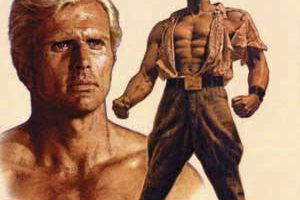
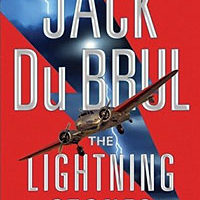

Of note, the Green Lama Prize Comics stories ran concurrent with the original pulps; going so far as to advertise Double Detective magazine in the comic. The character’s outfit is also more in line with his pulp counterpart, however, his powers are significantly more mystical. Not only can the Green Lama travel through time (yes really) he also fights the Devil!
I was greatly disappointed when Dark Horse Comics compiled their 2 volume set of “Green Lama Archives” that they chose to begin with the Spark Comics Green Lama #1 issue, skipping all of the earlier Green Lama stories from Prize Comics. These sound like they were much more interesting (and faithful to the pulp incarnation of Green Lama) than the later stories that turned him into a much more standard superhero character who could do basically anything by invoking the magic phrase “Om-Mani-Padme-Om” (similar to Captain Marvel’s “SHAZAM!”).
I’d still like to see the Prize Comics Green Lama stories reprinted somewhere, even if only in black-and-white.
It was intended as a reprint of the 8 Green Lama comic books, and the selling point was the artwork by Mac Rayboy.
Yes, I’d love to see the early GL comics put out by Prize, but I doubt we’ll see them.
It’s my understanding that (at least some of) the PRIZE COMICS Green Lama stories were also illustrated by Mac Raboy, but this is much less obvious since Green Lama wasn’t the feature character of the book who had the cover spot.
Obviously the older Prize Comics issues are harder to locate (wartime paper drives, etc.) than the late-1940s Green Lama Comics, and therefore would be a much greater undertaking due to the number of issues involved and the difficulty of locating a complete run, for the sole purpose of reprinting a single 8-page story per issue. I still wish someone would try. A few of the stories have already been scanned and are available on some of the public domain Golden Age comics websites.